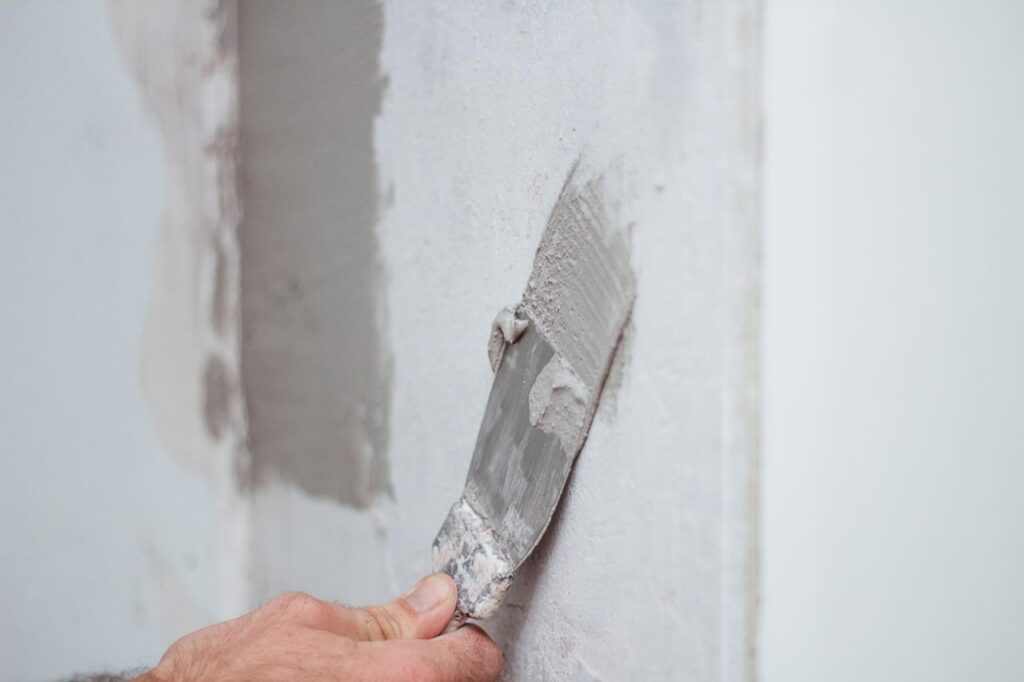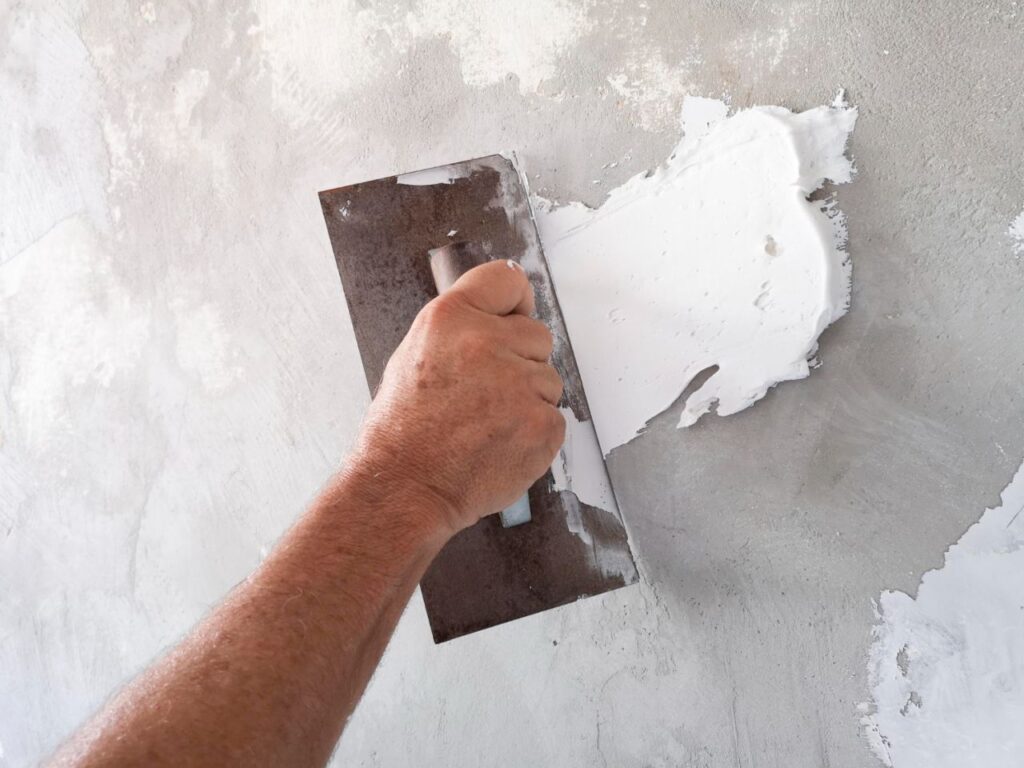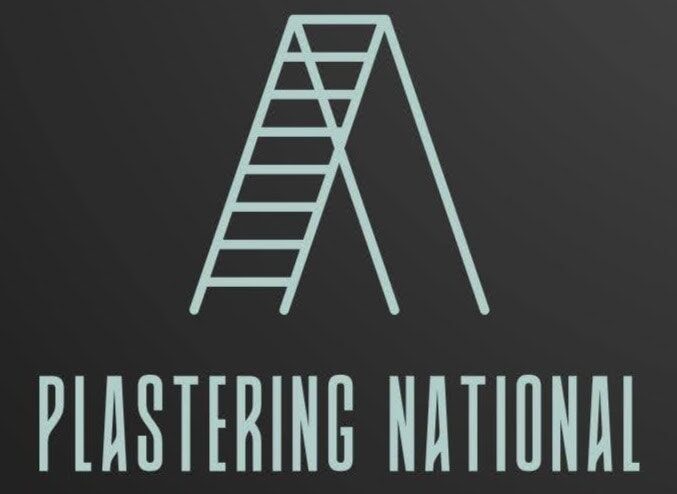The choice between gypsum and cement plaster is an important one in commercial plastering since it impacts the building’s aesthetics and functionality. One lightweight and easy-to-apply option is gypsum plaster, which has a smooth texture and dries quickly. Its natural properties make it perfect for making a smooth interior surface with less drying and painting time required. Because it aids in managing indoor temperature and contributes to reduced energy expenses, gypsum is also known for being environmentally friendly and energy efficient.
The resilience and longevity of cement plaster, in contrast, are noteworthy. Because of its durability and adaptability, cement plaster is a great material for commercial structures that need an external or interior coating that can resist severe weather. It’s great in damp regions because it doesn’t absorb water easily, therefore mould and fungus won’t be able to thrive. The versatility of cement plaster in terms of textures and styles opens up a world of possibilities when it comes to the outside aesthetic, satisfying a variety of architectural preferences.
Environmental concerns, desired finish, and space specific requirements are some of the many considerations when deciding between gypsum and cement plaster for commercial plastering. The smooth surface and thermal qualities of gypsum make it an efficient and fast choice for interiors, while the hardiness of cement plaster makes it ideal for exteriors and places that get a lot of moisture. Choosing the right plaster for a commercial building project requires thinking about how it will look, how it will work, and how much maintenance it will require in the future.
What Is Gypsum Plaster?
Making gypsum plaster, a white cementing substance, often involves adding retarders or hardeners to the mineral gypsum after it has been partially or fully dehydrated.
After being applied to the surface while still in a plastic form (with water), the gypsum sets and becomes hard through chemical recombination. It creates a smooth surface when put over brick, block, or concrete surfaces.
The main component of any gypsum plaster is gypsum rock, which is a chemical mixture of calcium sulphate and water with a water content of approximately 20%. Calcination, a controlled heating procedure, removes approximately three-quarters of this chemically mixed water from the gypsum rock during processing.
Advantages and Disadvantages Of Gypsum Plaster
Advantages
Using gypsum plaster in the building has several benefits, including the following:
- Gypsum is exceptionally workable since it spreads out evenly and requires little effort to apply. This material is incredibly versatile and easy to work with because it can be sprayed directly over brick walls or ceilings without a separate finish.
- Shrinkage Cracks: Unlike conventional cement plaster, which develops due to the high temperatures generated by the cement-water reaction, gypsum-water plaster does not.
- The plaster sets in 25 to 30 minutes faster than other plasters. It needs to dry up before you can paint it. You can start painting over plaster up to 72 hours after applying it.
- There is no need for curing time: Unlike conventional cement plaster, this plaster does not need curing, which means less water and less time spent curing it during construction.
- Compared to regular cement plaster, applying and setting takes much less time, making it a very productive material.
- Impressive Performance: The plaster’s long-lasting durability and low weight lessen the structure’s dead load and leave behind outstanding high strength once dried. Impact resistance is a property of the plaster.
- The walls are properly aligned, even, and smooth since the plaster is easy to apply and level. It is possible to have perfectly correct angles in the corners.
- Less Supervision: Regular quality checks are required for traditional cement plasters due to the precise cement ratio to sand. Therefore, competent supervision is necessary. Conversely, plastering does not necessitate as many quality checks; therefore, less supervision is required.
- Natural sand, one of the basic elements required for traditional cement plaster, may not be available or difficult to get on-site, while gypsum is easily accessible.
- Plaster is extremely fireproof, making it a safer option.
- As a material, gypsum does not transmit heat well. Thanks to this, a building’s heating and cooling bills will be lower in the winter and summer. As a result, gypsum is an excellent insulator.
- The plaster’s malleability makes it ideal for decorative applications where various shapes are desired.
- This material is eco-friendly.
Disadvantages
Gypsum plastering has a few drawbacks, which are as follows:
- You can’t use plaster on the outside walls of a structure because it will keep the outside moist.
- Additionally, you should refrain from using gypsum in constantly wet places, including bathrooms, W/Cs, flooded or wash areas, and the like.
- Gypsum plaster is more expensive than the more conventional cement mortar (cement and sand) plaster for the same thickness. However, cement mortar plastering would be more expensive in regions where natural or river sand is not readily available for building because it requires an additional 6 mm layer of gypsum to be completed.
- It doesn’t matter how dry the area is; the plaster will disintegrate after three months.
What Is Cement Plaster?
Masonry surfaces, both inside and out, are often smoothed using cement plaster-a combination of appropriate sand, plaster, portland cement, and water-with a final coat of gypsum plaster applied to interior surfaces sometimes.
Both inside and out, Masonry surfaces can be smoothed with cement plaster, a combination of sand (fine aggregate), portland cement, and water in the right amounts.
Cement plaster refers to mortar with cement added to it as a binding agent for plastering.
Advantages And Disadvantages Of Cement Plaster:
Advantages
- Walls finished with a plaster coating are stronger and last longer than those with unmixed cement.
- Its application ranges from interior to exterior surfaces.
- You can’t use this plaster to prevent rust.
- Its thermal conductivity is greater or lesser.
- Its acoustic characteristics are also very similar.
Disadvantages
- This plaster is prone to breaking because its tension and flexural strengths are weak.
- The permeability of cement vapour to water vapour is not 100%.
- During the curing process, this plaster uses a lot of water.
- There is an overwhelming amount of waste throughout the application.
- This plaster is expensive and time-consuming to apply. Thus, it drives up the price of the project.
FAQs About Plastering
Which Plastering Material Is More Cost-Effective For Commercial Applications?
Generally, gypsum plaster is more cost-effective than cement plaster regarding material costs and application efficiency. However, other factors, such as durability and maintenance costs, should also be considered.
Can Gypsum And Cement Plasters Be Used For Exterior Commercial Applications?
Yes, both gypsum and cement plasters can be used for exterior applications, but cement plaster is typically preferred for its superior durability and weather resistance.
How Do I Determine Which Plastering Material Is Best For My Commercial Project?
Consider the building’s location, environmental conditions, desired finish, and budget constraints. Consulting with a professional plastering contractor can help you make an informed decision.
Is One Plastering Material Inherently Better Than The Other For All Commercial Projects?
No, the suitability of gypsum or cement plaster depends on each commercial project’s specific requirements and constraints. Both materials have their unique advantages and applications.
Can Gypsum And Cement Plasters Be Used In A Commercial Project?
Yes, it’s possible to use gypsum and cement plasters in combination, depending on the specific requirements of different areas within the commercial building. This approach allows for optimal performance and cost-effectiveness based on the needs of each space.
Critical Distinctions and Important Things to Keep in Mind
Time Management and Composition
Gypsum
Think of gypsum plaster as the industry’s speediest chameleon. This pliable sulphate mineral hydrates easily from a powdered state into a solid mass; its composition is calcium sulphate dihydrate. Above all else, gypsum has a setting time of about 20 to 30 minutes, which means you can get things done quickly and efficiently.
Cement
In contrast, cement’s plastering performance is more organized. Its composition includes a variety of minerals, including clay and limestone, and its hardening process is a chemical reaction known as hydration. The foundation is strong and will last long because this reaction takes a little longer. A few hours to a few days is the typical setting time for cement, typically longer than gypsum. On the other hand, it’s a great place to show off your intricate skills and attention to detail.
Durability and Strength
Cement
Cement has a reputation for being strong and long-lasting. For structural applications, particularly those requiring high strength and load-bearing capacity, it is frequently used for these reasons. If you have any jobs like this, you may trust plastering materials made of cement to endure significant loads and provide structural integrity.
Gypsum
Gypsum may lack cement’s physical strength, but it more than makes up for it in its specific application to plastering. Gypsum’s adaptability to use outside construction is one of its greatest strengths. With its great visual appeal and ease of installation, it stands out as a dependable option for interior finishes, including wallboards, plaster, and ceiling tiles. Be advised that regions susceptible to dampness or strong impact may not be appropriate for materials based on gypsum. To guarantee long-term durability, other materials might be more suited in such instances.
Fire Resistance
Gypsum
The inherent qualities of gypsum make it the material of choice when considering fire resistance. Its chemical nature makes it naturally fireproof. When exposed to high temperatures, the water molecules in gypsum emit steam, which acts as a barrier to prevent the flames from spreading. This is the material’s secret weapon when faced with high temperatures. Commercial buildings often use gypsum boards for fire-rated wall assemblies due to their high fire resistance, adding extra protection for occupants.
Cement
Similarly, cement plaster is quite proud of its fire resistance. Its structure and composition make it resistant to fires’ extremely high temperatures. While cement-based materials are typically very fireproof, prolonged exposure to high temperatures can weaken some constituents. To ensure the cement-based materials stay intact and fireproof under the expected conditions, it’s important to think carefully about them and get expert advice.
Insulation and Soundproofing
Gypsum
Are you interested in making your commercial building more aesthetically pleasing in terms of sound? Sort the gypsum. Commercial settings prioritising noise control often choose gypsum boards and panels due to their excellent soundproofing capabilities. Products made of gypsum for plastering have the unique property of absorbing and dampening vibrations of sound, making the space more peaceful and pleasant for everyone who enters. Gypsum also has excellent thermal insulation capabilities, which help keep the building’s temperature more controlled.
Cement
Although cement’s strength and durability are well regarded, its soundproofing and insulating capabilities need to be more well-known. You might have to buy some more insulation to get the soundprooshoulderature control you want. When deciding on a plastering material for your project, it’s important to have expert help to find the right balance between strength, durability, and thermal and acoustic performance.
Availability and Cost
Gypsum
Regarding practicality and affordability, gypsum is the go-to material for businesses. They offer a cost-effective alternative to plastering materials made of cement, as they are typically less expensive. The widespread availability of gypsum materials also facilitates supply chain management and ease of access for commercial projects.
Cement
Various factors, including kind, quality, and geographical availability, can affect the cost of cement, a material extensively utilised in buildings. The initial outlay for cement-based materials may be more than that of gypsum, but the value they provide in the long run more than makes up for it. To find out how much cement is cost-effective for commercial plastering jobs, you have to think about the project’s unique needs, your budget, and how prices vary among regions.
Pest
Cement
Plaster made of cement is not immune to mould, mildew, fungus, and the like.
Gypsum
As an anti-fungus plaster, gypsum plaster is impervious to insect damage.
Shrinkage
Cement
Shrinkage is possible in cement plaster due to its low tensile hand fracture and strength.
Gypsum
Due to its strong flexural and tensile strengths, gypsum plaster can inhibit shrinking.
Curing
Cement
Cement requires both pre- and post-curing of the plaster.
Gypsum
There is no need to wait for gypsum plaster to cure before using it.
Rust
Cement
You won’t be able to prevent rust with cement plaster.
Gypsum
When protecting electric metal fittings from corrosion, gypsum plaster is second to none. Connectors, etc.
Density
Cement
Cement plaster adds more weight to structures than gypsum plaster because of its higher density.
Gypsum
Lighter and less dense than cement plaster, gypsum plaster is easy to work with.
Application
Cement
Cement plaster is expensive and time-consuming to apply, which drives up project expenses.
Gypsum
The project budget will be smaller because it takes less time to apply gypsum plaster.
In conclusion, each material’s advantages should be considered when deciding between cement and gypsum for commercial plastering. Since it is fireproof, soundproof, and thermally insulating, gypsum is ideal for non-structural interior uses. However, cement’s structural abilities-strength, durability, and load-bearing capacity-take centre stage. Consider your business project’s unique needs and rules to arrive at the optimal choice.
Conclusion
Gypsum and cement are commonly used materials for commercial plastering, with each having its own advantages and disadvantages. Gypsum plaster is a white cementing substance that is a mixture of calcium sulphate and water, and is incredibly versatile and easy to work with. It has several advantages, such as being workable, shrinkage-resistant, and easy to apply. It also requires less supervision than traditional cement plasters, making it a safer option.
Cement plaster, on the other hand, is a combination of sand, plaster, portland cement, and water, and is used to smooth masonry surfaces. It has advantages such as stronger walls, longer lifespan, and acoustic characteristics. However, it is prone to breaking due to weak tension and flexural strengths, and its permeability to water vapor is not 100%.
Cement plaster is expensive and time-consuming to apply, making it a more expensive option for projects. It is also prone to breaking due to its weak tension and flexural strengths, and its permeability to water vapor is not 100%. It also requires a lot of water during the curing process, leading to waste and increased project costs.
The choice between gypsum and cement depends on factors such as time management, composition, and the specific needs of the project.
Gypsum plaster is a quick and efficient option for non-structural interior uses due to its fireproof, soundproof, and thermally insulating properties. Its setting time is about 20-30 minutes, making it quick and efficient. On the other hand, cement has a more organized plastering performance, with a chemical reaction known as hydration, which takes longer. Gypsum is also known for its adaptability to outside construction and its ability to withstand high temperatures.
Cement is known for its strength and durability, making it suitable for structural applications. However, it may not be suitable for regions susceptible to dampness or strong impact. Gypsum’s fire resistance is due to its chemical nature, which emits steam when exposed to high temperatures. It is also used in fire-rated wall assemblies in commercial buildings.
Gypsum is also known for its soundproofing capabilities, making commercial buildings more aesthetically pleasing. It absorbs and dampens vibrations of sound, making the space more peaceful and pleasant. However, it may require additional insulation to achieve desired soundproofing and insulating capabilities.
In terms of availability and cost, gypsum is the go-to material for businesses due to its practicality and affordability. However, cement’s cost can be higher due to factors like type, quality, and geographical availability.
In terms of rust prevention, gypsum is superior to cement in protecting electric metal fittings from corrosion. Additionally, gypsum is lighter and less dense than cement plaster, making it easier to work with.
In conclusion, gypsum is ideal for non-structural interior uses, while cement’s strengths are more important.
Content Summary
- Gypsum and cement are the primary materials used for commercial plastering in Australia.
- The choice between gypsum and cement determines the final outcome of a plastering project.
- Gypsum plaster involves adding retarders or hardeners to partially dehydrated gypsum.
- Gypsum sets and becomes hard through chemical recombination when applied with water.
- Gypsum plaster creates a smooth surface over brick, block, or concrete.
- Gypsum plaster is exceptionally workable and versatile, requiring minimal effort to apply.
- Unlike cement plaster, gypsum plaster avoids shrinkage cracks.
- Gypsum plaster sets faster and requires less drying time before painting.
- There’s no need for curing gypsum plaster, saving time and water during construction.
- Applying and setting gypsum plaster is quicker compared to regular cement plaster.
- Gypsum plaster offers impressive durability and impact resistance.
- Plastering with gypsum requires less supervision compared to traditional cement plaster.
- Gypsum is easily accessible compared to natural sand required for cement plaster.
- Gypsum plaster is fireproof and acts as an excellent insulator, reducing heating and cooling bills.
- Gypsum’s malleability makes it suitable for decorative applications.
- Gypsum plaster is eco-friendly.
- Gypsum plaster is unsuitable for exterior walls and constantly wet areas.
- Gypsum plaster is more expensive than cement plaster but may be cost-effective where sand is scarce.
- Gypsum plaster disintegrates in moist conditions after three months.
- Cement plaster involves a mix of sand, portland cement, and water.
- Cement plaster provides strong and long-lasting finishes for both interior and exterior surfaces.
- Cement plaster is not suitable for rust prevention.
- Cement plaster’s thermal conductivity varies.
- Cement plaster’s acoustic characteristics are similar to gypsum plaster.
- Cement plaster is prone to breaking due to weak tension and flexural strengths.
- Cement plaster is not completely impermeable to water vapour.
- Cement plaster requires a significant amount of water during the curing process.
- Waste generation is high during cement plaster application.
- Cement plaster is expensive and time-consuming to apply, increasing project costs.
- Gypsum plaster hydrates quickly, setting in 20 to 30 minutes.
- Cement plaster’s hardening process is a chemical reaction called hydration.
- Cement plaster is strong and suitable for structural applications.
- Gypsum plaster adapts well to interior finishes but may not be suitable for damp or high-impact areas.
- Gypsum plaster’s fire resistance is due to its chemical nature, emitting steam when exposed to high temperatures.
- Cement plaster offers fire resistance but may weaken under prolonged exposure to high temperatures.
- Gypsum plaster provides excellent soundproofing and thermal insulation.
- Cement plaster’s soundproofing and insulating capabilities require additional insulation.
- Gypsum plaster is cost-effective and widely available.
- Cement plaster’s cost varies based on factors like quality and geographical availability.
- Cement plaster is susceptible to mould and mildew.
- Gypsum plaster is resistant to insect damage.
- Cement plaster may shrink due to low tensile strength.
- Gypsum plaster inhibits shrinking due to strong flexural and tensile strengths.
- Cement plaster requires pre- and post-curing.
- Gypsum plaster does not need curing before use.
- Cement plaster does not prevent rust.
- Gypsum plaster protects metal fittings from corrosion.
- Cement plaster adds more weight to structures due to higher density.
- Gypsum plaster is lighter and less dense, making it easier to work with.
- Gypsum plaster application is quicker, reducing project expenses compared to cement plaster.



